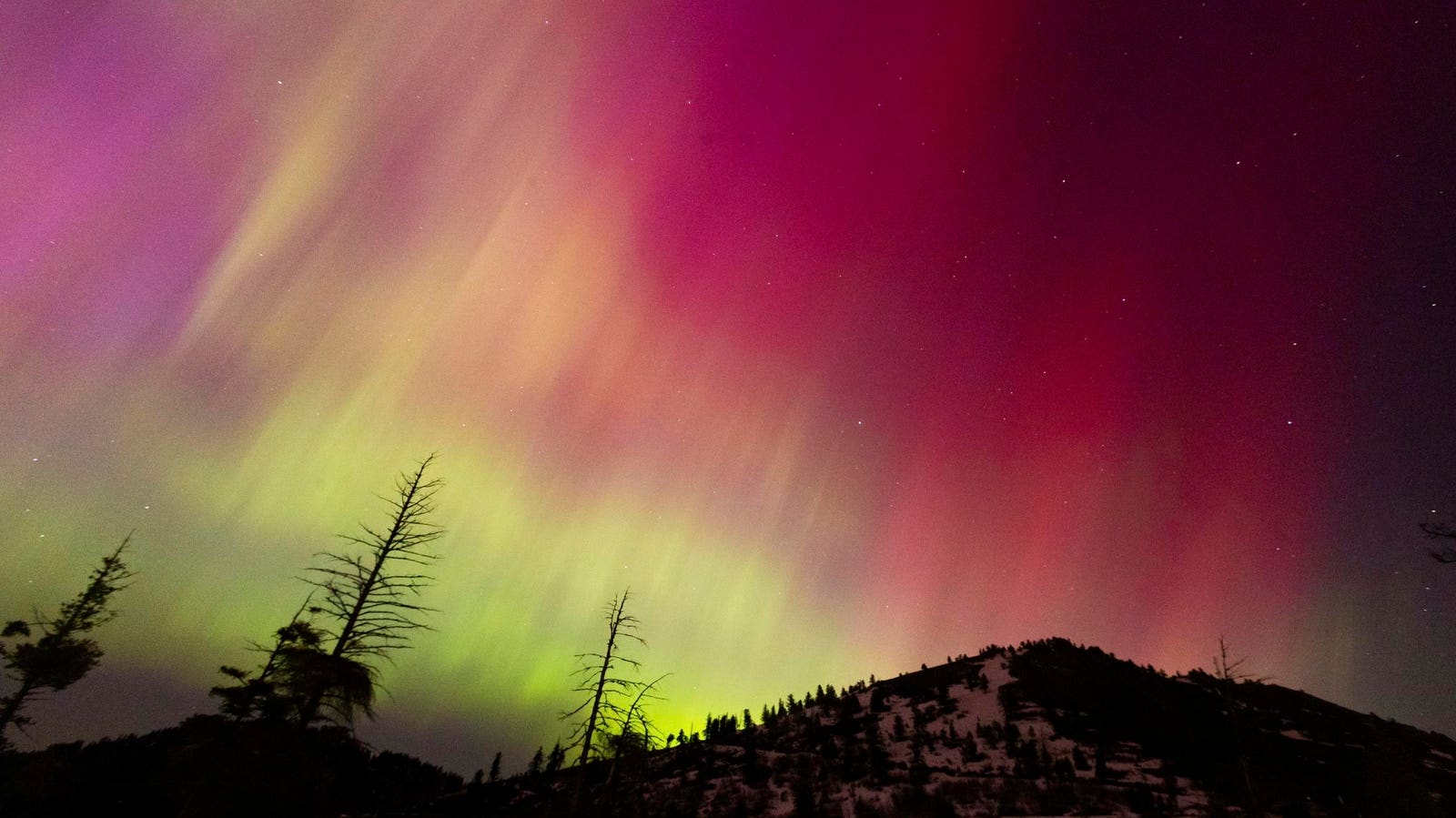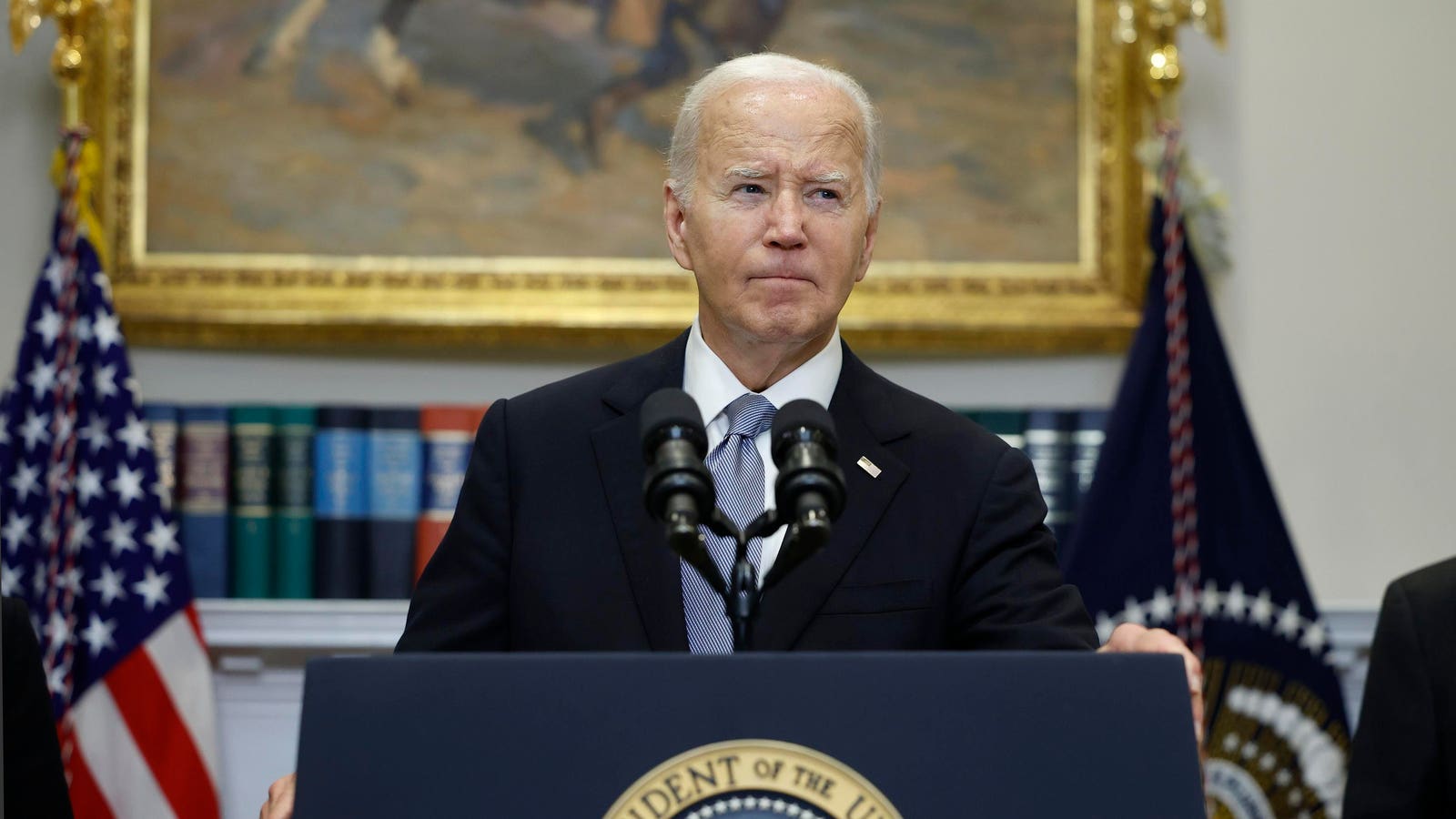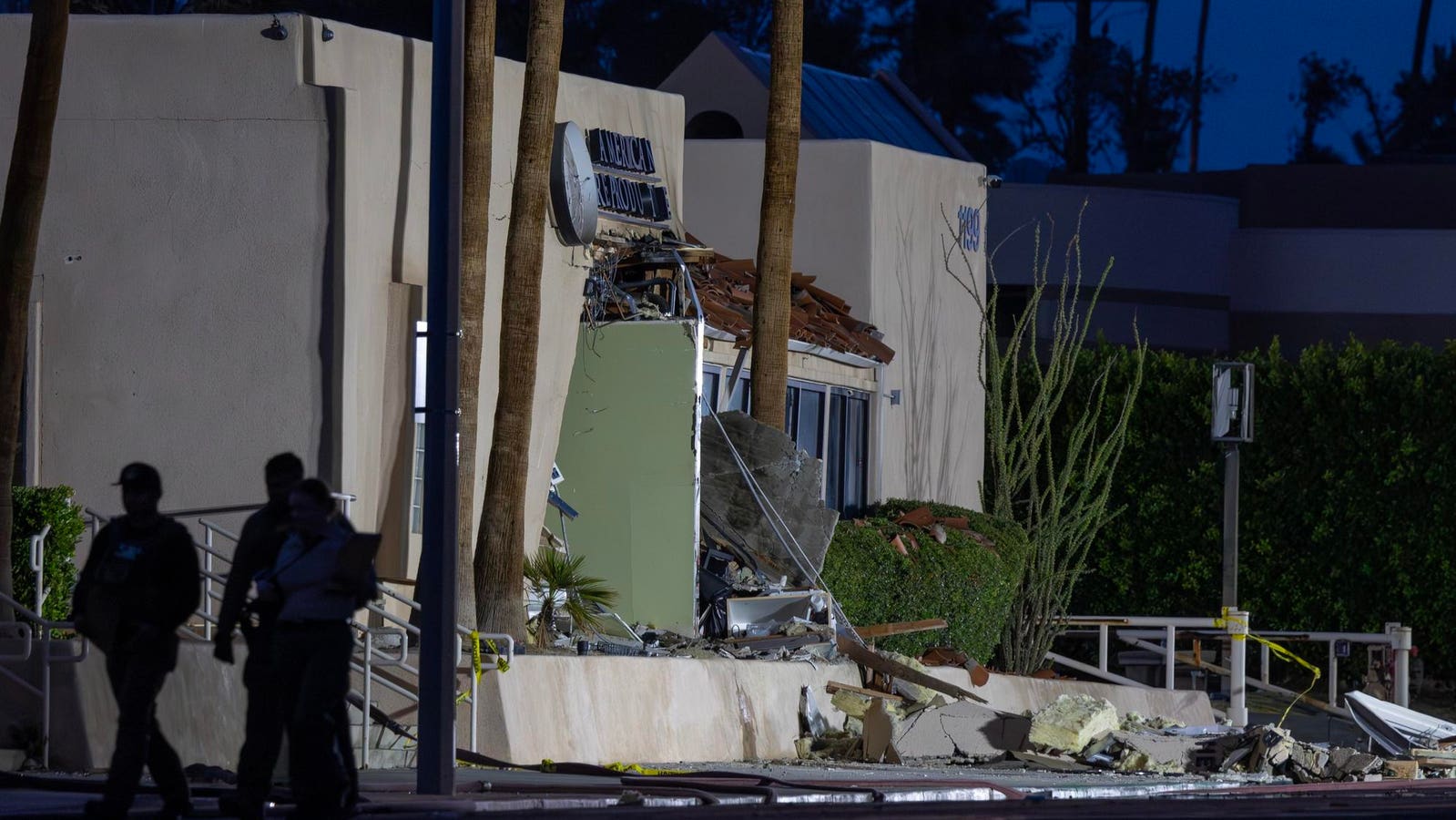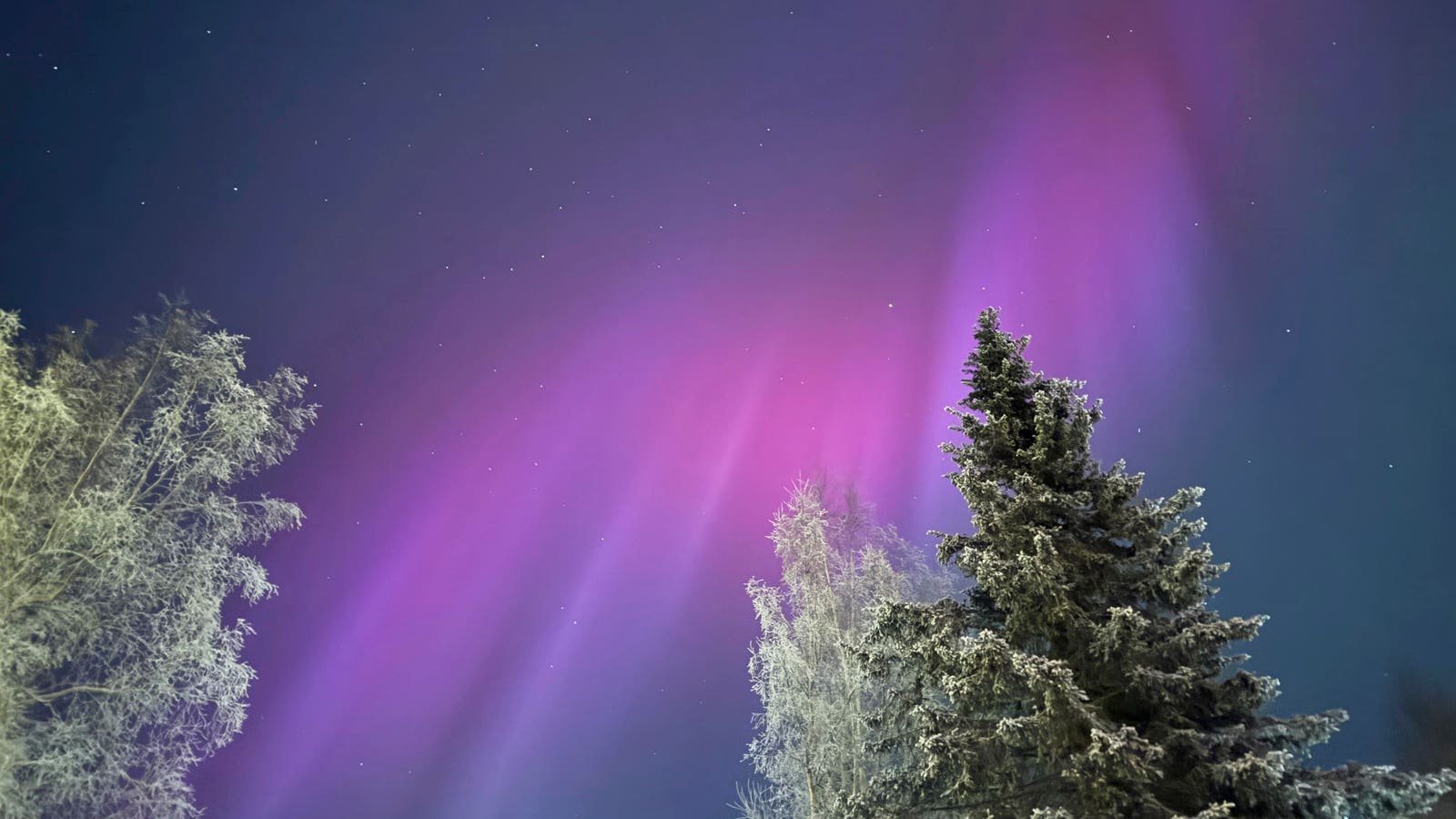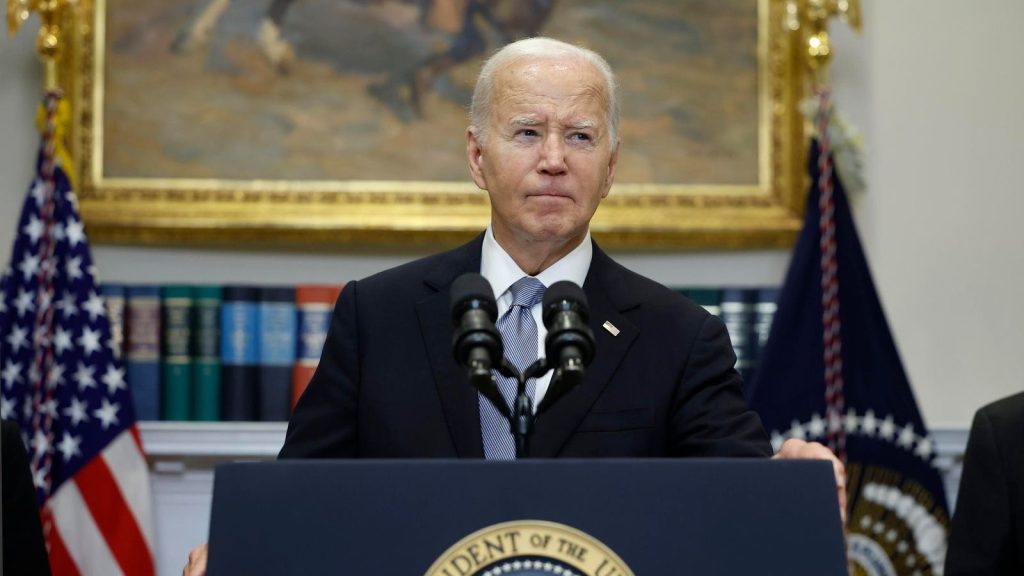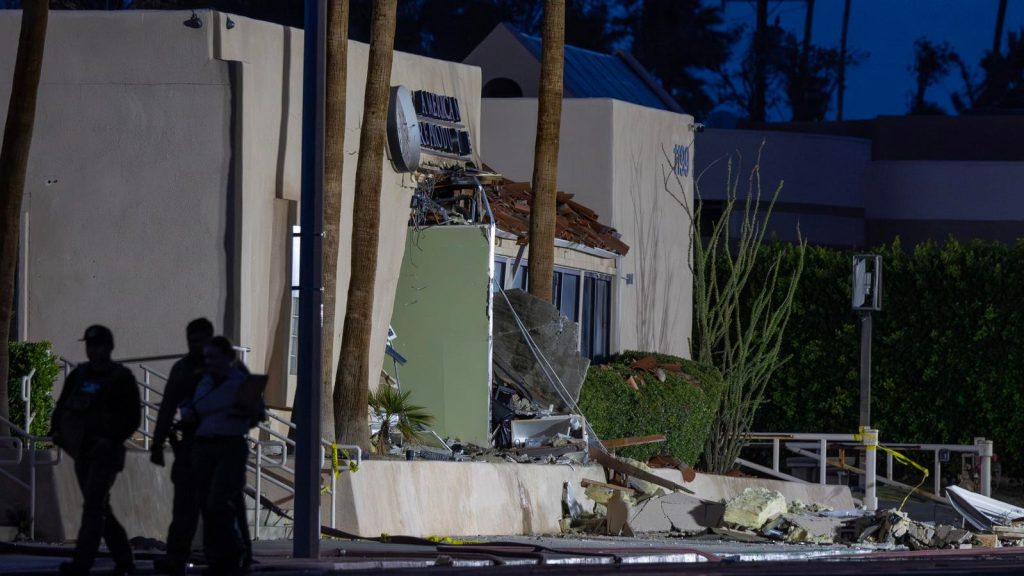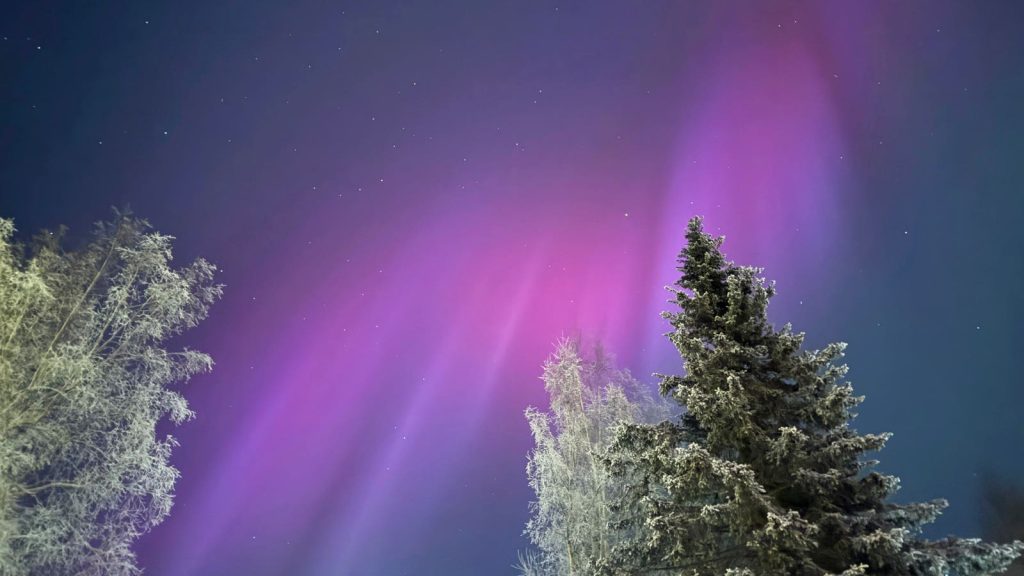Topline
Some U.S. states along the Canadian border may have an opportunity to view the northern lights on Wednesday, though auroral activity will likely increase later this week, according to the National Oceanic and Atmospheric Administration.
More states will likely have a chance to see the phenomenon later this week, forecasters said.
Key Facts
NOAA forecast a Kp index of four on a scale of nine for Wednesday night, suggesting auroral activity will move farther from the poles and be “quite pleasing to look at” for those in the right areas.
Auroral activity will likely increase by Friday, with an expected Kp index of five, as NOAA expects geomagnetic storm conditions to impact Earth’s magnetic field, according to the agency’s three-day forecast
Moderate radio blackouts are also expected, potentially affecting high-frequency radio communication as Earth is impacted by “strong” solar radiation events after a solar flare on Monday, NOAA said.
Get Forbes Breaking News Text Alerts: We’re launching text message alerts so you’ll always know the biggest stories shaping the day’s headlines. Text “Alerts” to (201) 335-0739 or sign up here.
Where Will The Northern Lights Be Visible?
Most of northern Canada and Alaska will have the highest chance of viewing the northern lights, while parts of northeastern Washington, northern Idaho, northern Montana, North Dakota and northern Minnesota have a slightly lower likelihood. Areas in South Dakota, Wisconsin, Upper Michigan and Maine have an even lower chance. (See map below.)
Wednesday’s view line.
What’s The Best Way To See The Northern Lights?
Auroral activity is best seen between 10 p.m. and 2 a.m. local time while at a high vantage point away from light pollution, NOAA said.
What’s The Best Way To Photograph The Northern Lights?
If using a regular camera, National Geographic recommends using a wide-angle lens, an aperture or F-stop of four or less and a focus set to the farthest possible setting. If using a smartphone, NOAA suggests turning on night mode and disabling flash.
Key Background
The northern lights were seen as far south as northern Florida and Texas last year, as NASA said solar activity achieved a “solar maximum.” Activity on the sun’s surface is measured over 11-year intervals, during which a “solar maximum” and “solar minimum” are achieved. This peak was reached in October 2024, when the Earth experienced the strongest geomagnetic storm conditions in two decades, according to NASA said. Aurora borealis is created from solar events, whose electrons interact with oxygen and nitrogen in the Earth’s atmosphere, causing them to become “excited” before emitting colorful displays. NASA believes a peak for northern lights displays will likely persist into early 2026.

